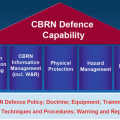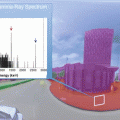© Springer Science+Business Media Dordrecht 2015
Samuel Apikyan and David Diamond (eds.)Nuclear Threats and Security ChallengesNATO Science for Peace and Security Series B: Physics and Biophysics10.1007/978-94-017-9894-5_88. NATO Nuclear Policy, the Ukraine Crisis, and the Wales Summit
(1)
NATO Defense College, Roma, Italy
Abstract
NATO’s 2010 Strategic Concept called upon the Alliance to carry out three core tasks: collective defense, crisis management, and cooperative security. Since the beginning of the Alliance each of those tasks has been emphasized at different times. Following the 9/11 attacks NATO joined the United States in becoming an expeditionary alliance, focusing on crisis management and collective security through robust partnership programs and out of area conventional military operations around the globe. Deterrence policy, and nuclear matters in particular, were de-emphasized. Indeed, some argued that there was no longer any requirement for NATO to have a nuclear strategy, nor US warheads stationed in Europe. With the end of its mission in Afghanistan at the end of 2014, the member states were already facing the challenge of determining whether the next version of NATO would continue to play the same expeditionary role. Some of the new member states in Central Europe, however, were hoping to return to an emphasis on Article 5 of the Washington Treaty: collective security and territorial defense. Russia’s aggression in early 2014 against Ukraine made that a much more immediate concern for the Alliance as a whole, and gave greater import to the NATO summit later that year.
This chapter considers NATO nuclear policy in light of recent events and decisions from the September Wales Summit. It reviews the significant diminishment of the nuclear mission since the end of the Cold War, and addresses possible changes or updates to that mission given Russia’s sudden change from strategic partner to potential adversary. It emphasizes the importance of deterrence, which includes nuclear weapons, missile defenses, and conventional forces, to the underlying mission of the Alliance, which is the security of the member states, their populations, and their strategic interests.
8.1 NATO Nuclear Policy
The member states of the North Atlantic Treaty Organization (NATO) have been protected by nuclear weapons for three generations, since the first American atomic artillery projectiles were placed in Central Europe in 1953. Since then the Alliance has added two additional nuclear weapons states, has created elaborate multinational planning, basing, security, and employment processes, including roles for host nations teamed with US warheads, and saw its atomic arsenal grow to more than 8,000 US, British, and French warheads stationed in the theater in the 1970s. Since then, those numbers have diminished significantly, until today there are but a few hundred warheads left in Europe. Yet, according to the NATO web site, it remains true today that
The supreme guarantee of the security of the Allies is provided by the strategic nuclear of forces the Alliance, particularly those of the United States; the independent strategic nuclear forces of the United Kingdom and France, which have a deterrent role of their own, contribute to the overall deterrence and security of the Allies.1
The Alliance points out that “dramatic changes in the Euro-Atlantic strategic landscape brought about by the end of the Cold War were reflected in the Alliance’s 1991, 1999 and 2010 Strategic Concepts”2 and in the 2012 Deterrence and Defense Posture Review. At the same time, the United States has produced a series of national security strategies and nuclear posture reviews (the latest of which was released in 2010) that also reflect the dynamic international security environment and the changing role for nuclear weapons in deterrence policy.3
NATO also likes to highlight its reduced reliance on nuclear forces which has been manifested in “steady and very significant reductions in the number of systems, overall weapon numbers and readiness levels since the end of the Cold War.” This has had an impact on operational readiness levels, as well: “NATO no longer has standing peacetime nuclear contingency plans, and NATO’s nuclear forces do not target any country.”4
All recent documents stress the point that as long as there are nuclear weapons in the world, NATO will remain a nuclear Alliance. This does not mean that US weapons will remain stationed in Europe, but with three nuclear member states it cannot but be a nuclear alliance. And as NATO strategy highlights, “Deterrence, based on an appropriate mix of nuclear and conventional capabilities, remains a core element of NATO’s strategy, even though the circumstances in which any use of nuclear weapons might have to be contemplated are extremely remote.”5
There are significant political and bureaucratic implications to the members of a nuclear alliance.
Political oversight and control are the cornerstones of NATO’s nuclear posture and are shared among member countries. NATO members agreed to ensure the broadest possible participation of Allies in collective defence planning on nuclear roles, in peacetime basing of nuclear forces, and in command, control and consultation arrangements. Within the NATO HQ structure, the Nuclear Planning Group (NPG) provides a forum in which nuclear and non-nuclear Allies alike (except France, which has decided not to participate) engage in the development of the Alliance’s nuclear policy, and in decisions on NATO’s nuclear posture.6
New members are considered full members of the Alliance in all respects, including the requirement to commit to the Alliance’s policy on nuclear weapons.
8.2 The Wales Summit
The 2014 Ukrainian crisis forced the North Atlantic Alliance to reconsider the appropriate balance between the three goals established in NATO’s 2010 Strategic Concept: collective defense, crisis stability, and cooperative security.7
The emphasis over the past 20 years has been on the latter two of those three policy objectives—crisis stability and cooperative security. Collective defense has been increasingly neglected by the member states. This seemed like a reasonable approach at the time for several reasons. The major threat from the East during the Cold War seemed to have evaporated; the call for out of area operations around the globe increased dramatically after the end of the Cold War in the early 1990s (as seen most evidently in Bosnia, Afghanistan, and Libya); and the lack of a immediate “peace dividend” after the fall of the Berlin Wall made all member states anxious to reduce military spending wherever feasible. All of these efforts meant that in a smaller military that emphasized certain objectives, the other pillars necessarily had to suffer—and that meant collective defense under the Washington Treaty.
Collective defense was, of course, the original raison d’etre for the Alliance when it was created in 1949. NATO’s purpose was to protect the territorial integrity and sovereignty of the member states in Western Europe, with military forces-in-being facing a massive Soviet conventional threat in Eastern Europe. When it became clear early on that the allies were unable and unwilling to provide the necessary conventional forces to meet that threat, the Alliance turned to nuclear deterrence and the threat of first use of atomic weapons in order to stem any Soviet or Warsaw Pact aggression. This ultimate guarantee of a state’s integrity was enshrined in the US extended deterrence commitment to its allies.
This guarantee worked for many decades. As with any deterrence relationship, it is impossible to prove whether deterrent forces or political commitments were most instrumental in preventing the outbreak of war on the European continent for more than 50 years. Yet since the end of the Cold War there have been increasingly frequent signs from some member states that they questioned the strength of that commitment. This concern over the credibility of Article 5 was most often heard from the new member states found in Central and Eastern Europe, those that were in the Warsaw Pact during the Cold War but happy to leave the embrace of communism and join the West. Even before the 2014 Ukraine crisis several of the East European member states were raising such concerns over the neglect of collective defense, which was the primary reason most of them joined the Alliance. These concerns, however, met with little resonance in the West.
A commonly heard refrain from Alliance insiders is that “we do not want to return to the Cold War.” At first blush, this is a seemingly reasonable statement. Yet, cold war is certainly better than hot war, which could be the result if the Alliance lets down its guard in the face of a great power that has the capability, if not yet the confirmed will, to pursue an aggressive foreign policy. As in the case of conventional forces, this implies a need for well thought-out responses, including military preparedness. It is important to remember that the West only gets one vote in whether it returns to a cold war; it must also respond to how its adversary decides to proceed.
The Alliance did respond to the Ukraine crisis, although in a quite measured and limited way. It deployed some modest conventional forces to the Baltic States and Poland in an effort to restore confidence in its Article 5 commitments on the part of Allies and the potential adversary. The United States also deployed two B52 strategic bombers to the United Kingdom and to an exercise in the Baltics during the height of the tensions. It is unclear whether this was meant to be a signal to Russia. The combination of these activities, as well as statements from senior leaders of the Alliance, make it clear that the focus on the three core pillars of Alliance security—collective defense, cooperative security, and crisis management—has shifted to an enhanced emphasis on collective defense, at least for the short term. This may imply the reversal of a two-decade long trend that witnessed regular pronouncements about the importance of Article 5, while at the same time some states were reducing the forces necessary to conduct that mission.
The Wales communiqué repeats the standard NATO liturgy that the Alliance relies on an “appropriate mix” of forces: conventional, missile defense, and nuclear. But upon closer examination, there appears to be a problem with that equation and its levels of emphasis at the summit. The Alliance’s conventional forces are not pre-positioned in the right place in the right numbers to meet the current threat and assure those member states that feel threatened. This reflects, in part, conscious decisions by the Alliance over the past two decades to restructure, reduce numbers, reduce readiness, and create a different kind of military force from the kind it had during the Cold War. It also reflects the commitments made to Moscow at the time of the first NATO enlargement that the Alliance would not station significant forces in the new member states.8 This was meant to be a confidence building measure for Russia. Yet it is a political commitment, not a legally binding international agreement. If circumstances change, the Alliance has every right to revisit this commitment.
For 20 years, Alliance communiqués have minimized any threat in Europe, calling Russia a “strategic partner” with special benefits, including its own forum for direct communication with the Alliance (the NATO-Russia Council). Members derived a peace dividend through the overall diminution of military forces. At the same time, the Alliance created a different type of military, one better-suited to out-of-area operations that required greater responsiveness, greater flexibility, a smaller footprint, and ease of transportation. This meant fewer main battle tanks, armored vehicles, medium and long range missiles, medium and heavy bombers—in sum, none of the old-fashioned expensive equipment that the Alliance previously had to keep on hand in large numbers in Central Europe to deter or respond to Soviet aggression. That means there is very little of that kit left in Europe at a time when the Alliance might wish it had some to deploy to the weak spot on its perimeter.
Stay updated, free articles. Join our Telegram channel

Full access? Get Clinical Tree






